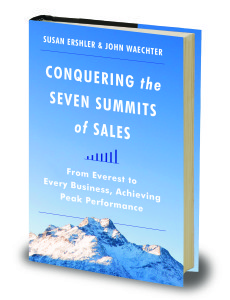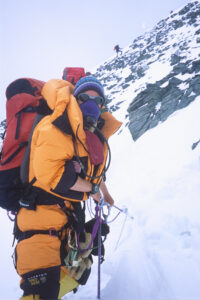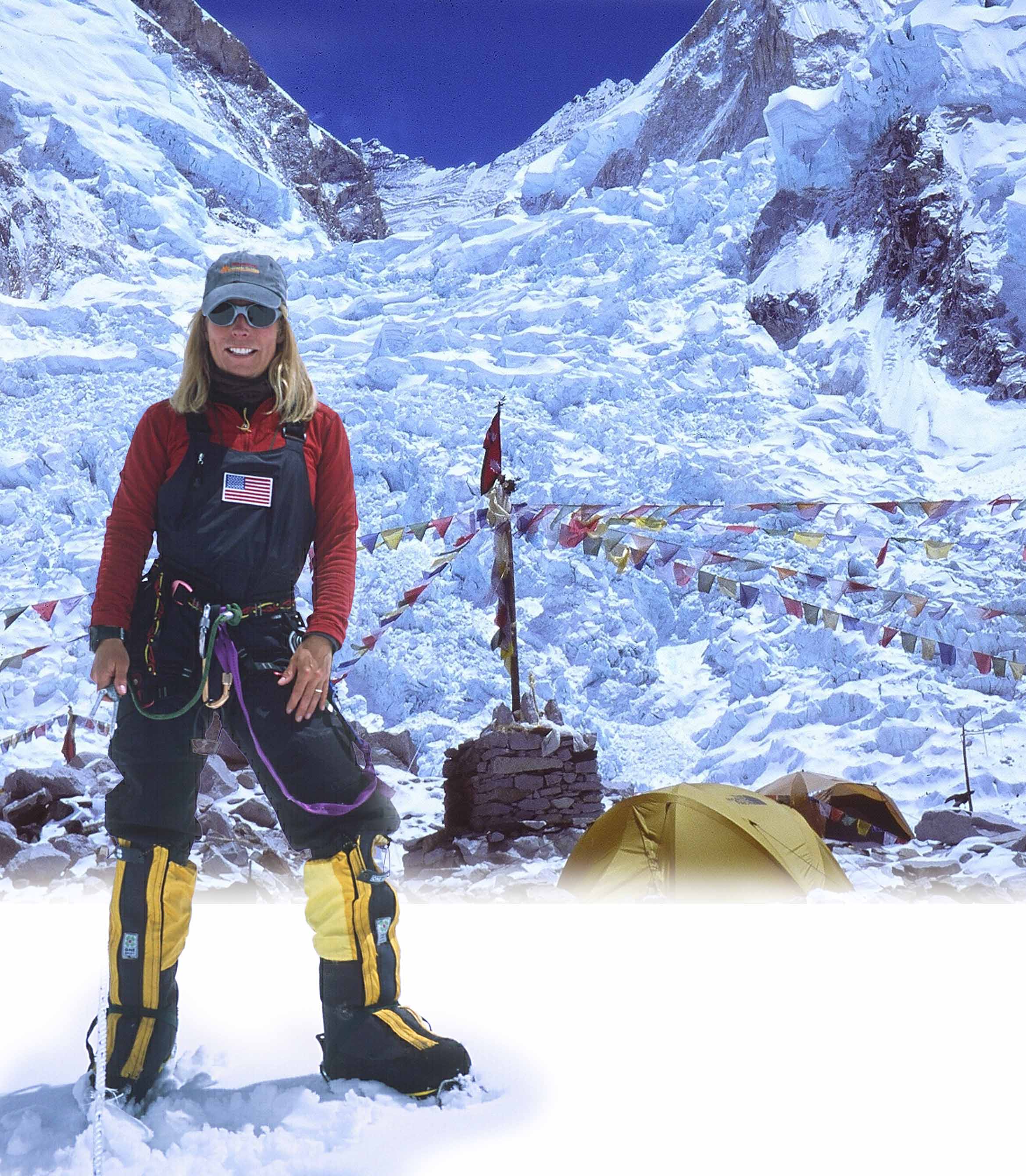Climbing to the Top
- What’s the best formula for setting goals?
- How do I prepare and truly commit to achieving them?
- What about perseverance?
- How do I overcome resistance?
Someone wisely once told me that to achieve something great, “Find the person who has already climbed the mountain.” In this case, I found someone who literally has climbed mountains. Susan Ershler has successfully climbed the elite Seven Summits and is a sought-after international speaker who has served in leadership positions for Fortune 500 companies for more than twenty years. She is also the author of CONQUERING THE SEVEN SUMMITS OF SALES: From Everest To Every Business, Achieving Peak Performance.
How to Set Goals
You have a new formula for setting goals. It’s not the SMART model, it’s the CLIMB model. Would you share that with us?
It all begins with a well-defined vision and a set of clearly defined goals. The CLIMB system we developed on our journey to becoming top performers will provide you with a structured approach to goal setting that is both disciplined and focused.
C – Concise: Your goals must be specific, quantifiable, actionable, and support your vision.
L – Levelheaded: Your vision and goals must be realistic and attainable based on your current skills and level of professional development.
I – Integrated: Your goals must be related, relevant, and integrated with your vision.
M – Measurable: You must hold yourself accountable by using objective metrics to track your progress against goals. You must “measure the mountain.”
B – Big: Being realistic doesn’t mean thinking small. Be bold and ambitious in projecting your future. Think Big!
The Importance of Preparation
Let’s talk about preparation. Obviously preparing for a climb elevates it to a life or death activity. How have you used what you learned in climbing about preparation in other areas like sales or goals?
No BIG mountain is scaled in a single climb. No quota or BIG business objective is achieved in a single day. You must step away from the business and create a detailed roadmap that delineates every step of your journey and includes metrics to measure success along the way.
If we don’t have a plan in writing, we have a tendency to react to disruptive things, for example like constant email. We need to make sure we focus on the important activities that will lead us to success, reviewing our plan on a daily basis.
The Power of Commitment
Commitment. Many talk a good game. You may believe them, but then they quit before they even get going. How do you help people truly commit?
Achieving peak performance, both personally and professionally, can dramatically change our lives. So once we have a vision we must commit to achieving it. Peak performers say, “I will” not “I will try.” For example, if you want to climb a mountain or run a marathon, sign up, pay the fee and then work backwards. In climbing, I had to visualize myself on the summit of Everest – that was my vision in advance for years. In business, I viewed myself as a vice president in the Fortune 500 world for years before I achieved that title. Big visions can take years to achieve, but say, “I will do it” and never give up.
One great piece of advice in the book that I like is to think like a guide, not a sales person. Explain the difference and tell us why this is so valuable.
 If we just think like a sales person, we might view our objectives as going out and selling our products or services to our customers. If we think like a “trusted” guide, we view ourselves as guiding our customers to success with solutions that will help them achieve success and/or improve their bottom line. As a trusted guide, if we make our customers successful, they will trust us for years, and we, too, will be successful.
If we just think like a sales person, we might view our objectives as going out and selling our products or services to our customers. If we think like a “trusted” guide, we view ourselves as guiding our customers to success with solutions that will help them achieve success and/or improve their bottom line. As a trusted guide, if we make our customers successful, they will trust us for years, and we, too, will be successful.
At the end of the book, you discuss perseverance. Why do so many people give up right when they are so close?
When pursuing big dreams, we will all encounter setbacks, be told NO, or get knocked down. Pain can be tough. On Everest, two months of climbing high on the mountain can be a bit painful at times, and eventually people may want to stop the pain by turning around. When customers tell us NO, that may be embarrassing, but we need to persevere.’
Facing Resistance
How do you persist when facing resistance?
To achieve peak performance there may well be times when we need to push through the pain. Or, treat a NO as “not yet.” When a customer tells us NO, they don’t necessarily mean NO, they just may not understand our value proposition. If we have a plan that will definitely guide our customers to success, then go back, go back and go back until we achieve success. High pressure does not lead to success in business, perseverance does.
What else distinguishes peak performers?
Build strong relationships cross-functionally throughout your business internally, externally and with others on your climbing team. We don’t climb high mountains alone, nor do we attain business success by ourselves. Expert resources can shave years off our learning curve.
CONQUERING THE SEVEN SUMMITS OF SALES: From Everest To Every Business, Achieving Peak Performance


